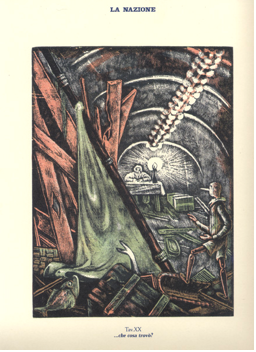
Tavola’s picture of the beast has turn-of-the-20th-century look to it that might be classified as reminescent of modernist architecture or its predecessor: futurism. The images of the shark’s spimal column is very clean resembling a metallic structure. The red planks and the crates to the left of the frame make the shark’s belly look like a grotesque carricature an industrial city.
Furthermore, there are some references to biblical drawings or even images. The old hermit sitting down seems to have a halo reminescent of St. Jerome as drawn by Albrecht Dürer. It also has a baroque texture to it: utilizing and filling every part of the frame with detail, to avoid giving a single centralized theme to the picture and making the frame structure more heterogenious. While Pinocchio's colours fit in with the rest of the picture, however, Geppetto stands out: his white robe and the halo give him a god-like stance. Whether there is a Christian motif in the picture is open to interpretation. Pinocchio, insignificant, has to save the man in order to become a boy (become ensoulled). For this to happen, Geppetto has to be destroyed and broken, giving up his life so that his child can be saved.